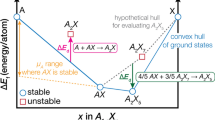Abstract
Crystal structure, pressure response, and polymorph transformation were investigated for crystalline indole through dispersion-corrected density functional theory (DFT-D) method. An accurate, nonempirical method (as in the latest implementations of CASTEP) is used to correct for the general DFT scheme to include van der Waals interactions important in molecular crystals. Ambient structural details, including space group symmetry, density, and fine structural details, such as bicyclic angles, have been reproduced to within experimental accuracy. Pressure response of the structure was obtained to isostatic pressure up to 25 GPa, in increments of 1 GPa. Evolution of space group symmetry and the bicyclic angle were mapped as a function of pressure. A previously unknown phase transformation has been identified around 14 GPa of isostatic pressure. Total energies of the phases before and after phase transformation are nearly identical, with a phase transformation barrier of 0.9 eV. The study opens up the door to reliable DFT investigations of chemical reactions of crystalline aromatic systems under high pressure (e.g. formation of amorphous sp3 hybridized phases).
Similar content being viewed by others
References
P.Roychowhury; B. S. Basak; Acta Cryst. (1975) B31 1559.
R. Bini; Proceedings of the International School of Physics “Enrico Fermi” (2002) 147 455.
J. D. Dunitz; Mol. Cryst. Liq. Cryst. (1996) 279 209.
M. Citroni; B. Costantiani; R. Bini; V. Schettino; J. Phys. Chem. B (2009) 113 13526.
A. Lautie; M. F. Lautie; A. Gruger; S. A. Fahkri; Spectrochim. Acta (1980) 36A 85.
H. Sun; S. J. Mumby, J. R. Maple; A. T. Hagler; J. Am. Chem. Soc. (1994) 116 2978.
H. Sun; Macromolecules (1995) 28 701.
S. J. Clark, M. D. Segall, C. J. Pickard, P. J. Hasnip, M. J. Probert, K. Refson, M. C. Payne. Zeitschrift fuer Kristallographie. 220(5–6) pp. 567–570 (2005)
Perdew, J.P.; Burke, K.; Ernzerhof, M. “Generalized Gradient Approximation Made Simple”, Phys. Rev. Lett., 77, 3865–3868 (1996).
A. Tkatchenko and M. Scheffler. PRL 102, 073005 (2009)
Author information
Authors and Affiliations
Rights and permissions
About this article
Cite this article
Schatschneider, B., Liang, Jj. Accurate modeling of molecular crystal through dispersion-corrected density functional theory (DFT-D) method. MRS Online Proceedings Library 1301, 125–130 (2011). https://doi.org/10.1557/opl.2011.567
Published:
Issue Date:
DOI: https://doi.org/10.1557/opl.2011.567




